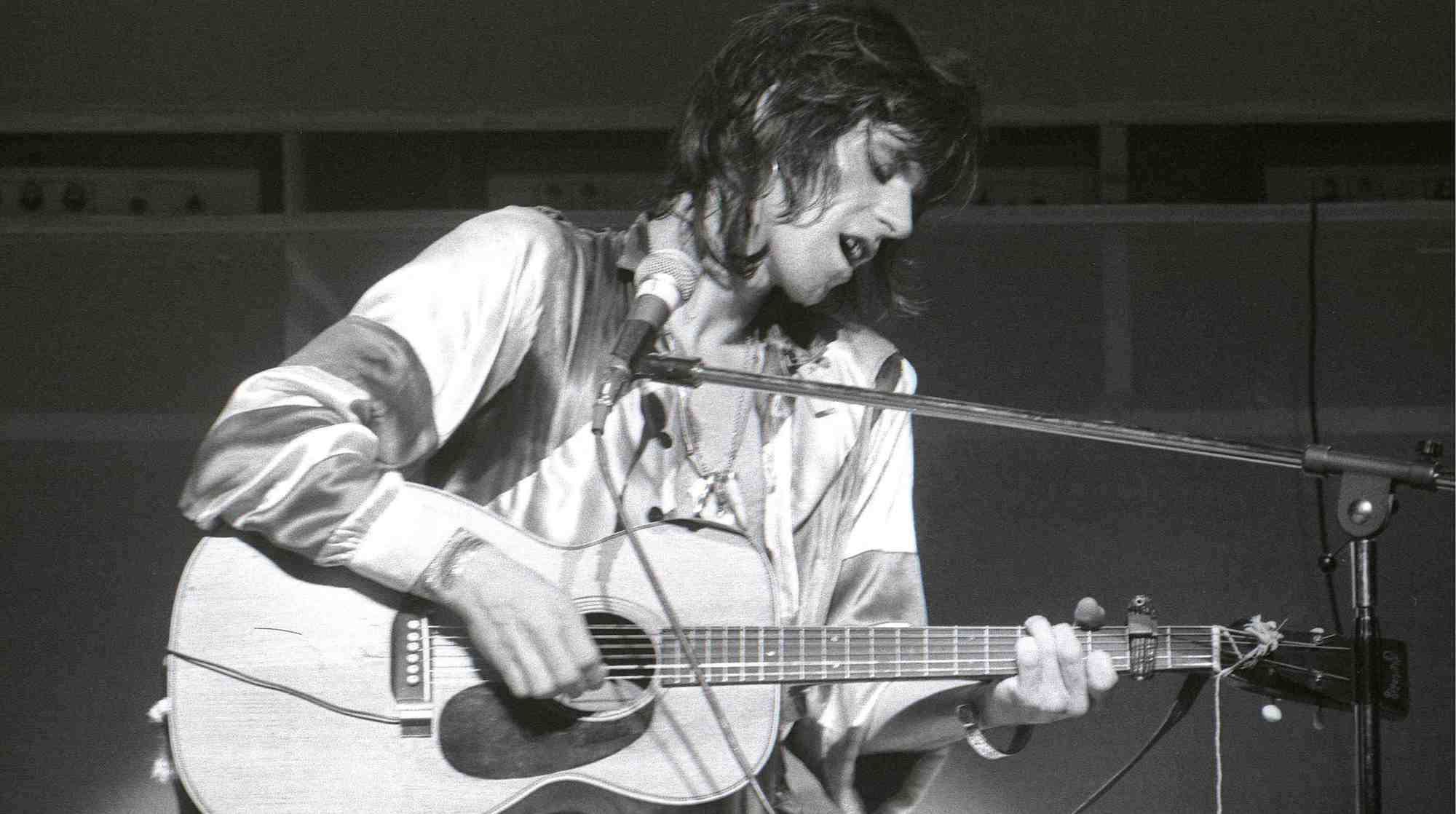How to Understand and Apply Nashville Tuning
Nashville tuning provides the high chime on the Rolling Stones’ “Wild Horses,” Rush’s “Natural Science,” and Pink Floyd’s “Hey You.”

Sometimes referred to as “high strung,” Nashville tuning is primarily a studio trick that harkens back to the golden age of Music City session pluckers.
It’s been used on oodles of recordings, and not only country tracks: Nashville tuning provides the high chime on the Rolling Stones’ “Wild Horses,” Rush’s “Natural Science,” and Pink Floyd’s “Hey You,” to name a few songs from the rock pantheon. The tuning has a kind of magic mystique worthy of exploration.
Get Set Up
Nashville tuning is like standard tuning, except for the higher octaves used for strings four through six. Traditionally this has been accomplished by applying the higher-pitched strings of a 12-string set to any guitar. The top two strings within each pair of a 12-string set are interchangeable, as they are designed to ring out in unison like a mandolin.
Tune them to standard E and B respectively. They are typically a bit lighter than the gauges in a six-string set. Strings three through six will be much lighter because they were designed to be the higher-octave partners to the lower-pitched four. Tune them as such, an octave above standard, to G, D, A, and E, respectively.
These days, custom sets are available such as D’Addario’s EJ38H High Strung/Nashville Tuning Phosphor Bronze pack (.010, .014, .009, .012, .018, .027).
High-Wire Acts
The traditional trick is to record a part on a six-string, and then double it in Nashville tuning to simulate a 12-string. You might ask, “Hey, couldn’t I simply cut a single track on a 12-string”? Well, lucky you if you own a 12-string, but a single track of that is still not as cool.
Doubling a six-string track in Nashville provides a more severe chorus effect, creates less clutter in the low end, and opens up new panoramic and processing possibilities. And while simulating a 12-string may be the primary application, plenty of precious guitar parts have been created and tracked by simply using a single guitar in Nashville tuning.
Tonal Sopranos
Chime and clarity with copious amounts of springy string ring are the tonal hallmarks Nashville tuning provides. A Nashville-style string set is clustered more closely together in pitch than a standard string set, so chord voicings can take on a keyboard-like quality. Furthermore, the acoustic guitar itself can adopt attributes associated with other instruments.
Applying a capo or utilizing an alternate tuning can help conjure tones more akin to a mandolin, five-string banjo, and even a soprano ukulele in re-entrant tuning (where the strings aren’t in order from lowest to highest pitch, or vice versa).
David Gilmour is said to have applied the latter concept quite literally to a variation of Nashville tuning on the iconic intro to Pink Floyd’s “Hey You” by using a second E string in the sixth slot. High-strung modal tunings can facilitate fantastic exotic acoustic tones.
Which Box Is Best?
Martin’s Sting Mini size 5 terz guitar prototype is one of the more interesting modern guitars in its museum. It was only tuned up a step and a half when I played it, yet the piccolo-like tone achieved via a high-strung small box was stunning. Nashville tuning takes that combo to new heights.
If you’ve got a travel guitar or a parlor style, give it a go. Common logic says that larger guitars don’t provide as much “pop,” and intonation issues may arise, but there are no real rules on the road to Nashville.
In his September 2018 Frets feature, Alex Lifeson said that he simply removes the wound strings from his Martin 12-string, and that he’ll use it for almost anything. “I actually recorded a track for John Mayall using only the Nashville-tuned Martin because I didn’t want to do the standard blues thing,” he explained.
Once you’ve got a Nashville-tuned acoustic, creativity is bound to flow and outside-the-box ideas will present themselves. What kinds of high-wire acts might facilitate brilliant tonal feats in your hands? There’s only one way to find out. String up, let your fingers flow freely, and see where Nashville tuning takes you.
Get The Pick Newsletter
All the latest guitar news, interviews, lessons, reviews, deals and more, direct to your inbox!
Jimmy Leslie has been Frets editor since 2016. See many Guitar Player- and Frets-related videos on his YouTube channel, and learn about his acoustic/electric rock group at spirithustler.com.
“Write for five minutes a day. I mean, who can’t manage that?” Mike Stern's top five guitar tips include one simple fix to help you develop your personal guitar style
"It’s like you’re making a statement. And you never know where it’ll lead." Pete Thorn shares the tip that convinced Joe Satriani he was the right guitarist for the SatchVai Band










